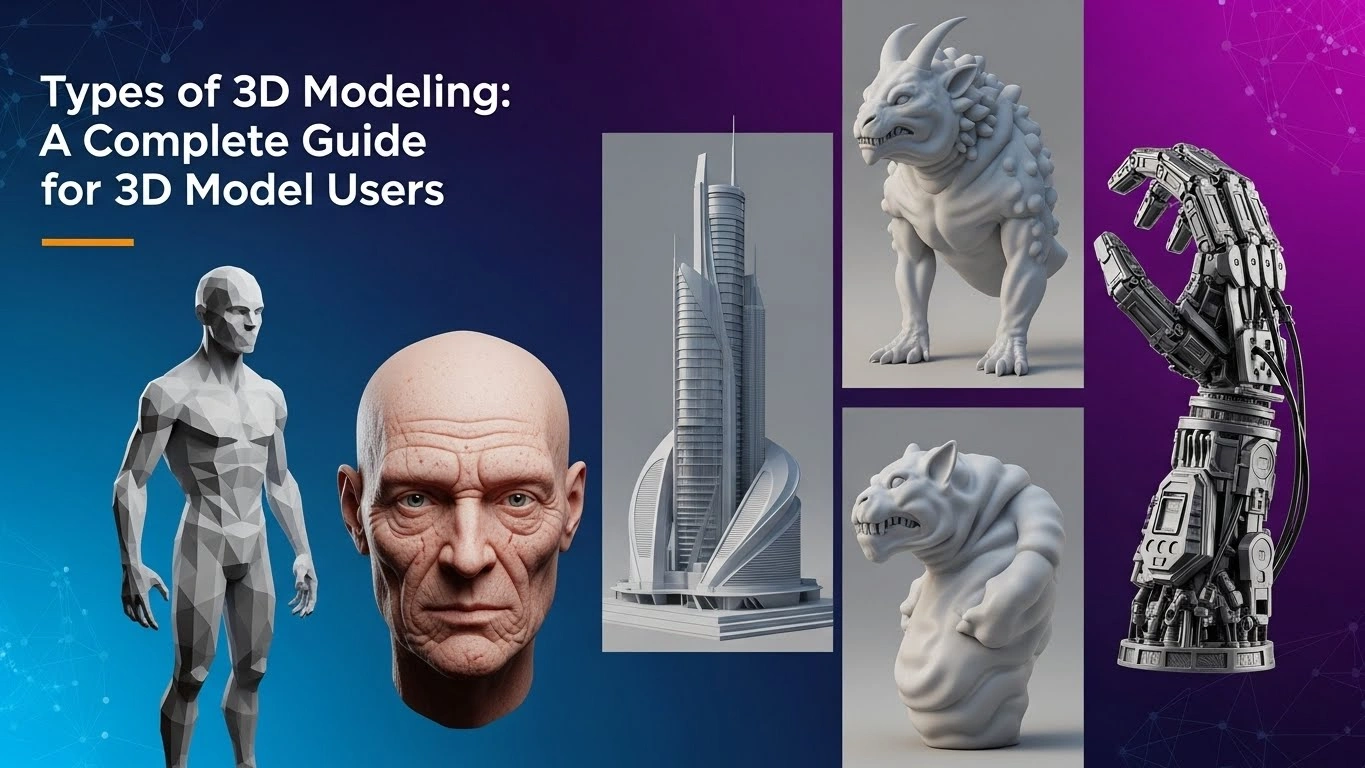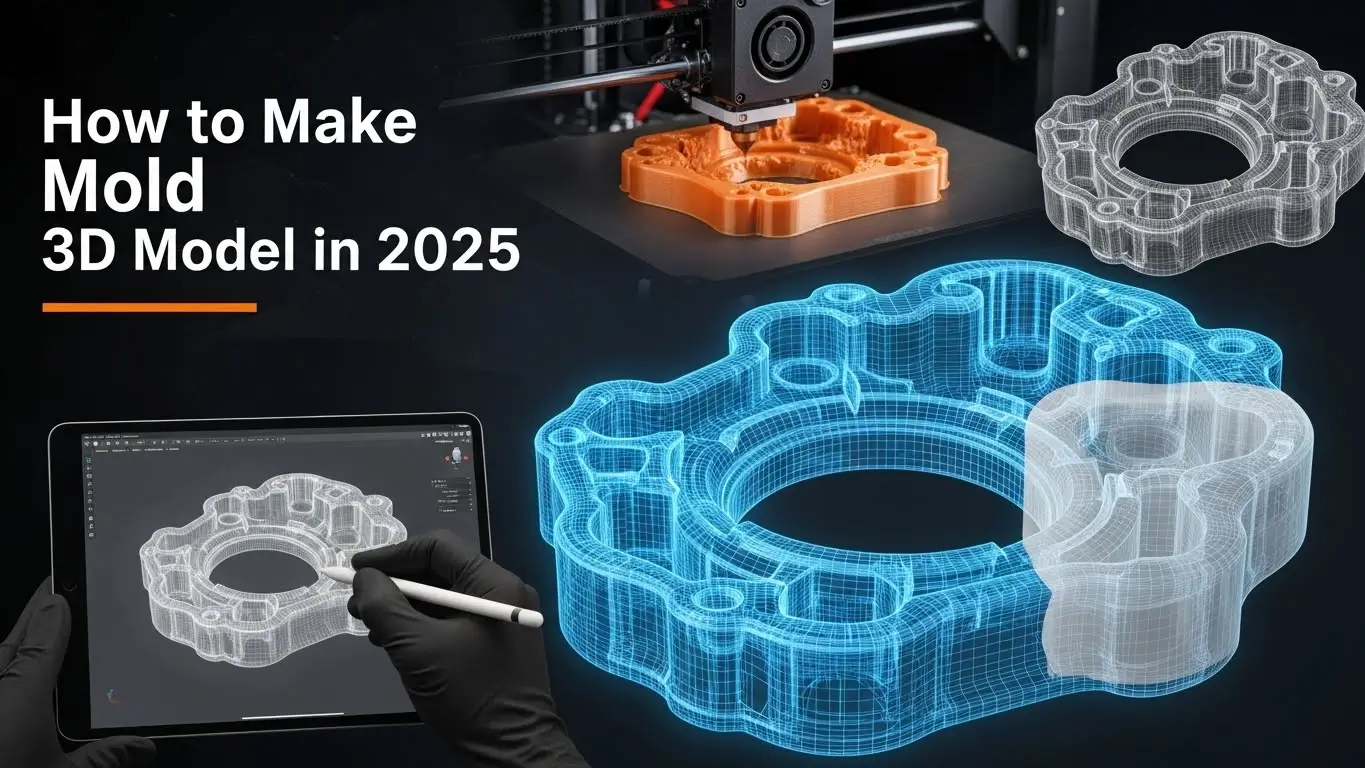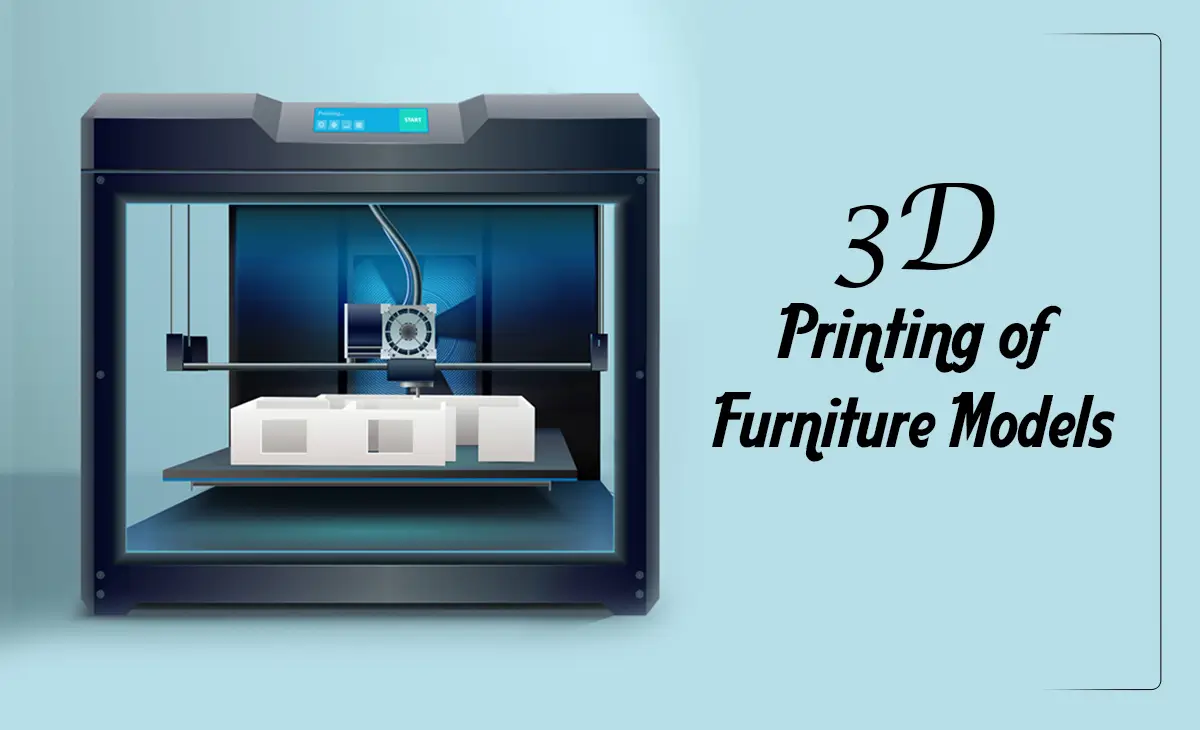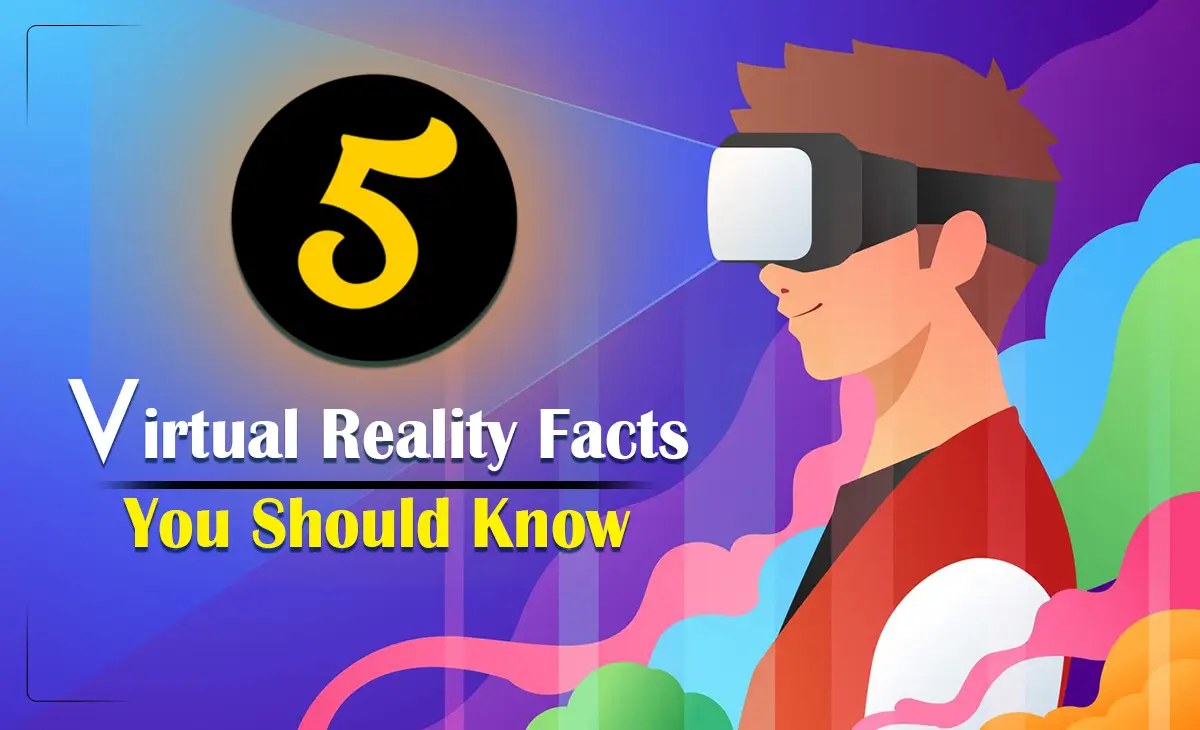The world of 3D is booming, encompassing gaming, product design, architecture, and 3D animation. However, behind every stunning 3D visual lies a technique that brings it to life. Whether you’re a 3D model user, a content creator, or someone considering professional 3D modeling services, understanding the various types of modeling is essential for selecting the right one for your project.
Let’s dive into the most common 3D modeling types and how they’re used across industries.
Types of 3D Modeling
There are many types of 3D modeling. Some of them are supported in AUTOCAD and some of them are not. Here are some types of 3d modeling in AutoCAD, like Polygonal modeling, Wireframe modeling, solid modeling, spline modeling, etc. On the other hand, Box modeling, procedural modeling, and Photogrammetry do not fully support in AutoCAD.
Polygonal Modeling
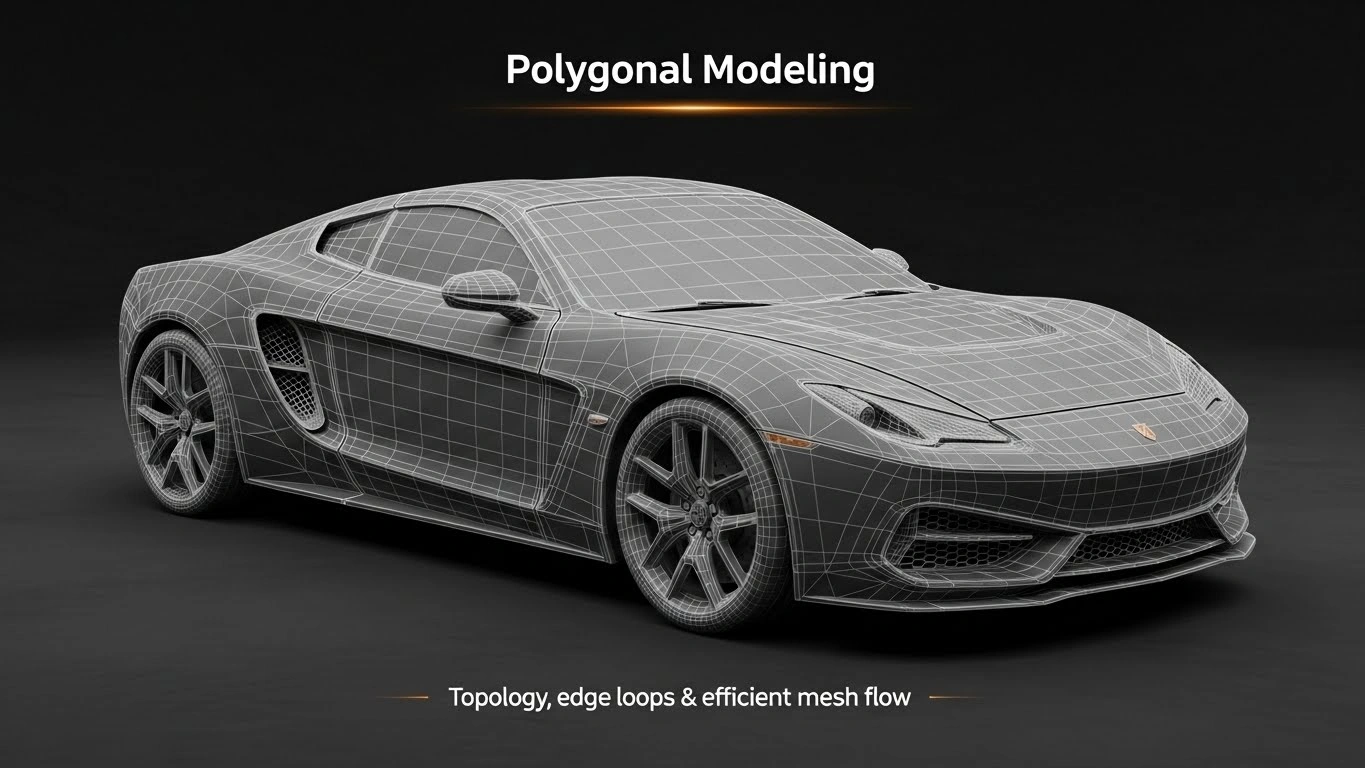
Polygonal modeling is the most widely used technique in the 3D world, especially in video games, films, and interactive media. It involves constructing models using connected points in 3D space, which form flat surfaces called polygons. These polygons, usually triangles or quads, create the mesh or structure of the model.
This method offers a high degree of flexibility and is well-suited for animation and real-time rendering. If you’re developing assets for games, designing characters, or working in 3D animation, polygonal modeling is often the first choice.
Modeling
NURBS stands for Non-Uniform Rational B-Splines. It’s a method based on mathematical curves, which allows for incredibly smooth and precise surfaces. Unlike polygonal modeling, which deals with flat faces, NURBS modeling focuses on curves and surfaces.
This modeling technique is often used in automotive, aerospace, and industrial design. When high accuracy and flawless surface smoothness are required, NURBS modeling is the go-to. Professionals working in product design and manufacturing regularly rely on this method.
Spline Modeling
Spline modeling uses curves called splines to define shapes in 3D space. These curves can be manipulated and then transformed into 3D forms through techniques like extrusion or lofting.
This approach is ideal for creating decorative shapes, flowing designs, and complex paths. Spline modeling is commonly used in architectural elements, motion graphics, and stylized animations. For those working on logo animations or ornamental structures, this technique offers fine artistic control.
Box Modeling
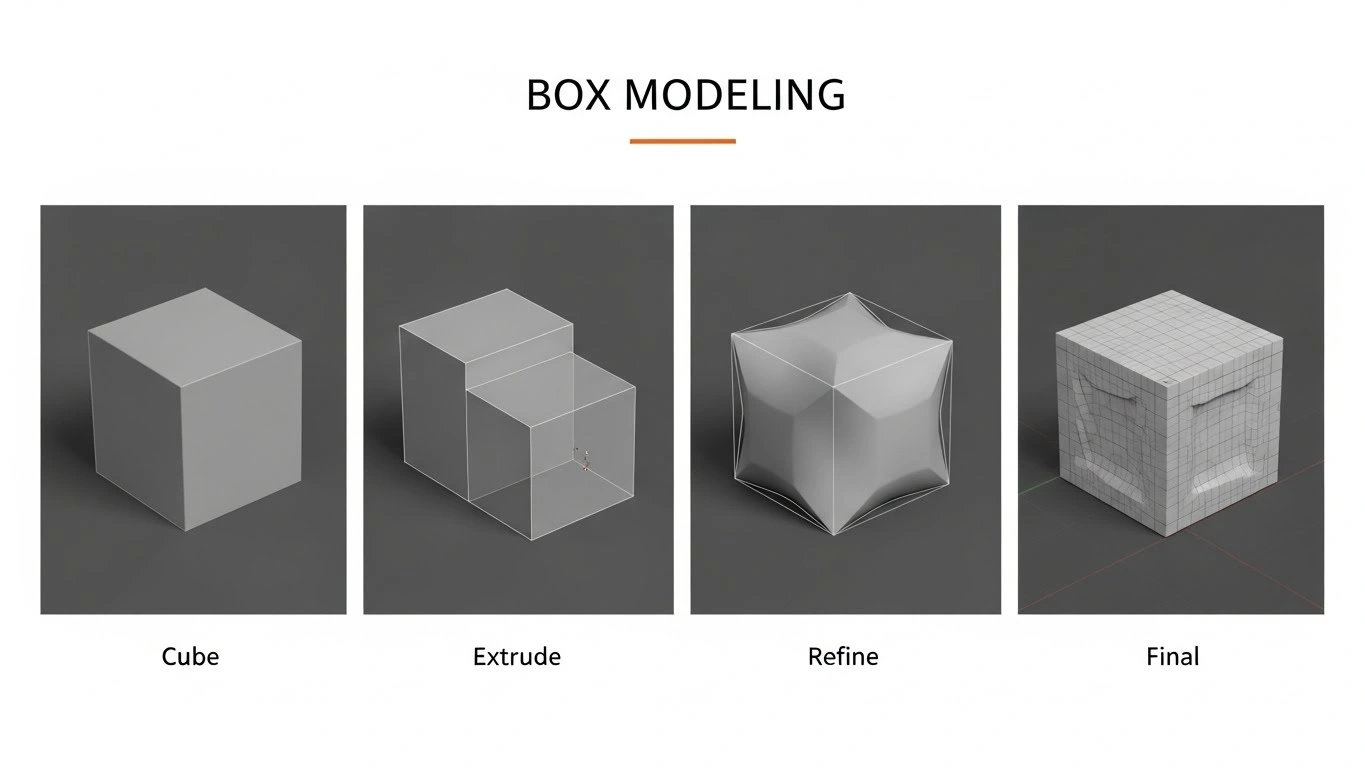
Box modeling starts with a primitive shape, like a cube or sphere. The artist then refines the form by cutting, extruding, and shaping it into the desired object. It’s a straightforward, intuitive process that allows for quick prototyping and concept development.
This method is perfect for building base meshes for characters, props, and environmental assets. Many artists prefer box modeling because of its speed and simplicity when starting a new project.
Digital Sculpting
Digital sculpting is one of the most artistic forms of 3D modeling. It allows the modeler to shape and mold the surface of a model much like working with digital clay. Artists can add extreme detail, texture, and realism to their models using brushes and tools.
This technique is heavily used in character design, visual effects, and high-end 3D animation. If you’ve seen hyper-realistic creatures or fantasy characters in films or games, digital sculpting was likely involved. It’s ideal for organic shapes like skin, muscles, and intricate features.
Procedural Modeling
Procedural modeling is based on rules, algorithms, and automation instead of manual creation. By using parameter-based tools, artists can effortlessly generate large or complex scenes, such as cities, forests, or terrains.
The main advantage of procedural modeling is scalability. It’s great for situations where you need variation and control at the same time. Architects, game developers, and simulation designers often use this technique to build large-scale environments efficiently.
Photogrammetry
Photogrammetry is a technique that involves capturing multiple photographs of a real object and turning them into a 3D model. Specialized software analyzes the images and reconstructs the geometry and texture of the object.
This method produces highly realistic results and is often used in cultural preservation, e-commerce, and immersive experiences like VR. It’s also ideal for replicating real-world products and structures when detail and realism are essential.
CAD Modeling
CAD (Computer-Aided Design) modeling focuses on technical precision. Engineers, architects, and industrial designers use it to build models that follow exact dimensions and specifications. These models are built with functionality and manufacturing in mind rather than visual aesthetics.
CAD models are essential in construction, engineering, and industrial applications. CAD modeling software is the best fit for projects that involve creating physical prototypes or manufacturing-ready designs.
Choosing the Right 3D Modeling Type
Choosing the right types of 3D modeling techniques largely depends on your project’s purpose. For gaming and animation, polygonal and sculpted models provide flexibility and realism. CAD and NURBS modeling offer the necessary precision for industrial and mechanical applications. Photogrammetry is unbeatable for realism, while procedural modeling saves time in building massive scenes. Each method has its strengths, and the best results come from choosing the right one for the job.
Why It Matters When Hiring 3D Modeling Services

When investing in professional 3D modeling services, understanding these types of 3D modeling helps you communicate your needs more clearly. Whether you need a game-ready asset, a product visualization, or a character for 3D animation, being specific about the modeling method can save time and money and improve the final output.
Hiring a skilled 3D team that understands the nuances of each technique ensures your vision is brought to life efficiently and accurately. The more informed you are, the better decisions you can make.
Final Thoughts
3D modeling isn’t just about creating objects; it’s about choosing the right approach to meet your creative or technical goals. With so many types of 3D modeling available, knowing which one suits your needs can help you get better results, whether you’re creating an animated film, building a product prototype, or launching a virtual store.
The world of 3D is full of opportunities, and the right modeling method can bring any idea to life. If you’re looking to work with professionals, make sure the 3D modeling services you choose align with your project type, style, and goals. It’s not just about building models, it’s about building the right ones.


